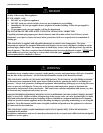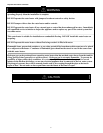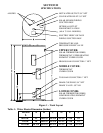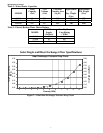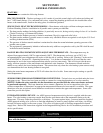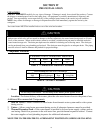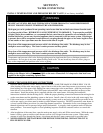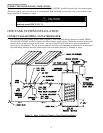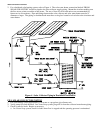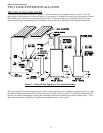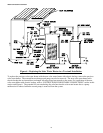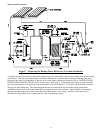
11
Pre-installation continued-
SOLAR WATER HEATING WITH ELECTRIC BACKUP FUNDAMENTALS
The solar heating system puts the most amount of heat into the storage tank when the bottom of the tank is
cool. That is where the internal heat exchanger is located. This allows the collector temperature to be
lower and still transfer heat into the storage tank.
When hot water is taken from the top of the tank, cool water is delivered to the tank bottom by means of a
diptube. The thermostat to turn on the lower heating element is located above the internal heat exchanger’s
level to ensure that the heat exchanger stays in a cool zone unless backup heat is needed. If the lower
heating element thermostat is activated, this is an indication that there is not enough solar heating available
to meet the immediate need. Approximately 1/3 of the storage tank volume needs to be removed without
sufficient solar heating for the lower element to energize.
The typical solar water heater with electric backup has only one element. In periods were solar heating is
not available the amount of stored hot water is about ¼ of the tank volume. The dual electric element
backup will allow the entire storage tank to hold hot water during these periods. The unique design
promotes solar heating yet does not compromise heater performance when it is not available.
The amount of heat transferred into the tank due to solar heating is inconsistent. The more heat stored in
the tank through solar heating, the lower the operating costs. The integrated mixing device must be
installed to ensure that if higher temperatures are achieved, safe water temperature delivery occurs. It is
recommended that storage tank temperatures are not allowed above 185°F. Temperature levels above that
point may activate the electric backup emergency cutoff device, disconnecting the electric backup system.
NOTICE
For California installation this water heater must be braced, anchored, or strapped to
avoid falling or moving during an earthquake. See instructions for correct installation
procedures. Instructions may be obtained from California Office of the State Architect,
400 P Street, Sacramento, CA 95814.




